Benguet State University RESEARCH JOURNAL CHED...
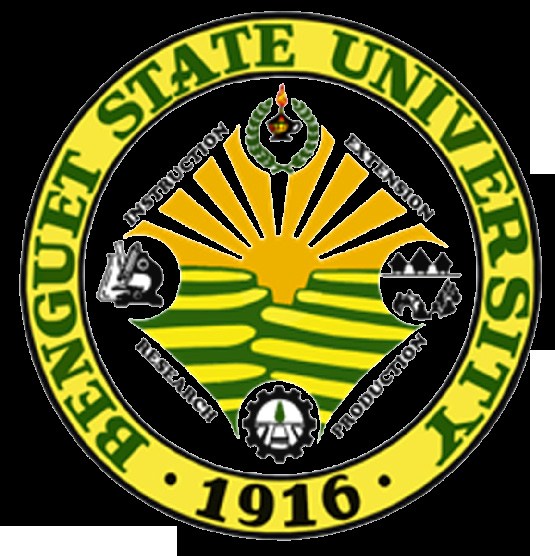
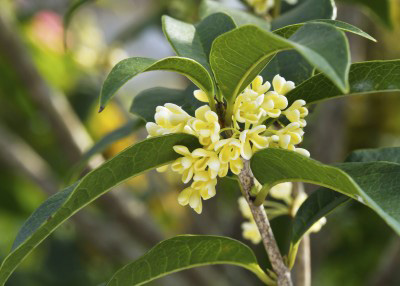
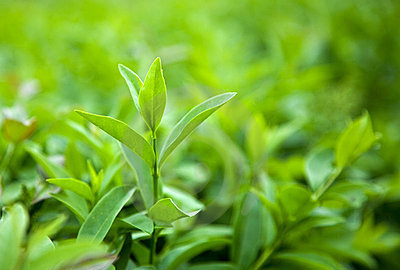
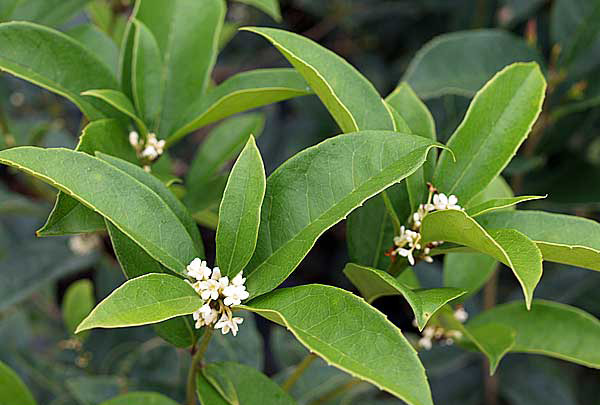
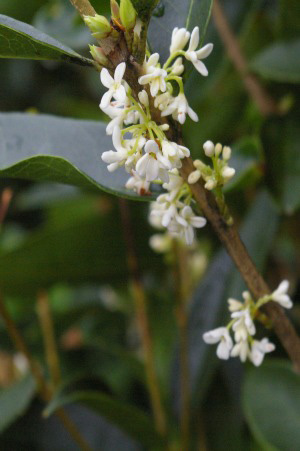
Benguet State University
RESEARCH JOURNAL
CHED Accredited Level B CMO No. 23 S. 2014
ISSN 0117-5297 Vol. 73 January-June 2015
All communications should be addressed to:
THE EDITOR
BSU Research Journal
Benguet State Univeristy
La Trinidad, Benguet 2601, Philippines
Telefax:( +6374) 422-5547
Email address: bsupublications@gmail.com
repo@bsu.edu.ph
Website: www.bsu.edu.ph
This multidisciplinary scientific journal publishes selected
papers but not limited to those presented during the
annual Benguet State University Agency In-House Review
(Agriculture, Forestry and Natural Resources, Social and
Education Sectors).
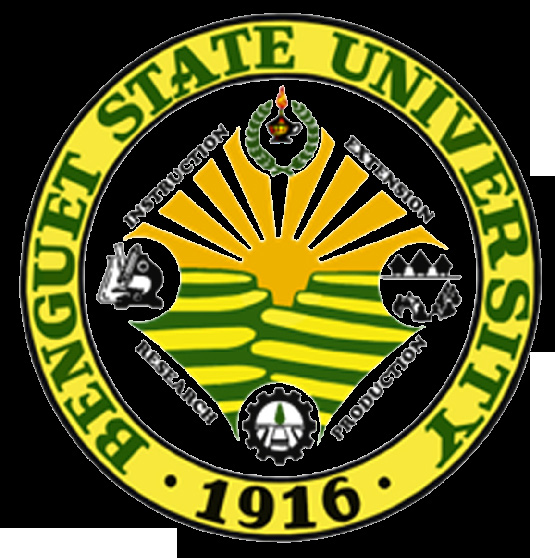
Benguet State University
RESEARCH JOURNAL
CHED Accredited Level B CMO No. 23 S. 2014
ISSN 0117-5297 No. 73 January-June 2015
TABLE O
C F CONTENT
ONTENT S
S
SPECIES PROFILE AND ASSOCIATED INDIGENOUS
KNOWLEDGE OF TREES AND SHRUBS
USED AS TEA IN BENGUET...............................................................................................
1-18
1-18
J. G. Tacloy
ARTIFACTS SPEAK: DIVERSIONS OF BENGUET
MATERIAL CULTURE........................................................................................................
19-30
19-30
S. F. Anongos Jr.
TIME USE ANALYSIS: WOMEN AND THEIR HOUSEHOLDS
AS SITES FOR EVERYDAY NEGOTIATIONS
AND ORGANIZING COMMUNITY LIFE........................................................................
31-46
31-46
R. S. Batani, G. G. Banes and K.O Labon
THE MATHEMATICS OF MAXIMIZING A PARALLELEPIPED
BOX WITH SPHERICAL OBJECTS..................................................................................
47-61
47-61
S. L. Oryan
QUELLMALZ HIGHER ORDER THINKING SKILLS
AND STUDENTS’ ACADEMIC PERFORMANCE
IN PHYSICS........................................................................................................................
62-69
62-69
B.B. Dolipas, J. S. Ramos and B.V. Villamor
Editorial Board
Editor-in-Chief
Bernard S. Tad-awan, PhD
College of Agriculture
Technical Editors
Ruth S. Batani, Institute of Social Research and Development
Julie A. Buasen, College of Arts and Sciences
Anne Heather B. Kiwang, College of Arts and Sciences
Kenneth A. Laruan, College of Forestry
Carlito P. Laurean , Climate Smart Agriculture Center
Janet Lyn S. Montemayor, College of Teacher Education
Belinda A. Tad-awan, Higher Education Regional Research Center
Marilyn B. Toledo, College of Arts and Sciences
Referees
Joel M. Addawe, Mariano Marcos State University
Ian Jasper A. Agulo, Mariano Marcos State University
Camilo B. Alumit, Benguet Governor’s Office
Virginia L. Anceno, NEDA-CAR
Jerico B. Bacani, UP Baguio
Mary Lourdes C. Carlos
Diosdado Estigoy, DENR-CAR
Jimmy B. Fong, UP Baguio
Helen A. Maddumba, DENR-CAR
Delfin L. Tolentino, UP Baguio
Editorial Consultants
Luciana M. Villanueva, PhD
Vice President for Research and Extension
Ben D. Ladilad, PhD, CESO III
University President
Editorial Staff
Lay-out Artist
Marie Fe B. Wance
OVPRE- Publication Office
Circulation Manager
Dominga P. Magnanang
OVPRE-Publication Office
Proofreaders
Dominga P. Magnanang
May D. Songaben
OVPRE-Publication Office
This is a refereed Journal
Benguet State University Research Journal (BRJ) January-June 2015, 73: 1-18
Copyright 2015, Benguet State University
SPECIES PROFILE AND ASSOCIATED INDIGENOUS
KNOWLEDGE OF TREES AND SHRUBS
USED AS TEA IN BENGUET
John G. Tacloy
College of Forestry
Benguet State University
ABSTRACT
To conserve indigenous shrubs and trees used as tea for environmental and socio-
economic development, profiling of these species was conducted. The research focused
in identifying and in obtaining initial information as to the nature of the habitat, flowering/
fruiting periods, and respondents’ indigenous knowledge of the shrubs and trees used as
tea.
Data were gathered through interviews with community folks using structured
questionnaire, augmented by field observations. There were 79 respondents who
contributed information; almost all are farmers and the great majority are elders and
women.
Eighteen indigenous trees/shrubs were identified by the respondents being used as
tea. The most popular being known to more than one third of the respondents is ‘Beltik’
(Syzygium sub-caudatum), followed by ‘Dael’ (Cipadessa baccifera), and ‘Amututin’
(Drimys/Tasmannia piperata).
Among these species, only ‘Beltik’, ‘Talugtug’ (Gaultheria leucocarpa), and ‘Tsa-ang
gubat’ (Carmona retusa) are used as tea; the rest are chiefly used as medicinal plants but
being prepared as tea.
Mostly used are the leaves, followed by the bark, rarely both the leaves and the bark
or the fruits/seeds. These parts are used fresh, air-dried, or sun-dried, and prepared
mainly by boiling. All species were reported to provide health benefits. As cited by the
respondents, propagation of the species is mainly through the use of wildlings, seeds,
cuttings, and flowering/fruiting usually varies with locations.
The species are found in mossy forest, except ‘Bangkoro’ (Morinda citrifolia L.),
‘Dita’ (Alstonia scholaris), ‘Tuai’ (Bischofia javanica), ‘Narra’ (Pterocarpus indicus)
and ‘Tsa-ang gubat’ which are found in lower elevations.
Keywords: Indigenous Knowledge, Tree Species, Profiling, Tea
Benguet State University Research Journal (BRJ) January-June 2015, 73: 19-30
Copyright 2015, Benguet State University
ARTIFACTS SPEAK: DIVERSIONS OF BENGUET MATERIAL CULTURE
Stanley F. Anongos Jr.
College of Arts and Sciences
Benguet State University
ABSTRACT
The paper is part of the bigger endeavor to validate appellations, meanings, and
histories of artifacts displayed at the Benguet State University museum. There were 70
distinct artifacts “brought back” in digital form to four communities in Benguet; Kabayan,
Atok, Kibungan, and Bakun. This paper reflects on the current state of Benguet material
culture from a perspective of social history of things, borrowing ArjunAppadurai’s
concept of divergence and to a certain extent, Igor Kopytoff’s commoditization.
Diversions in the value of Benguet’s material culture were preceded by the
transformed meaning of the materials brought about by a combination of trade,
commercial vegetable farming, and other forces of modernity such as education and
transportation developments. The alteration in the value and meaning of things has also
changed the manner in which Benguet people themselves use these materials. Aside
from non-use, some of these implements are now being displayed in private homes or
used in other ways. Diversions of things, therefore, are not always manifested outside
and only by other people but also within and from the people themselves.
Antique collection is a most common medium of artifact diversion in Benguet.
It is in this practice that many of the Benguet implements were commodified, that is,
developing a different value from its original value. As a commodified object, these
implements extend their history from actual tools in the place of origin to an object of
art and exoticism in another culture and country.
A more recent trend in the commoditization of these material cultures is in the
context of cultural tourism and its accompanying craving for souvenirs. This shift
demanded cultural symbols as souvenirs for tourists, which induced business minded
persons to produce replica of traditional implements for souvenir seeking tourists.
Museums have also defined diversion in the history of things. It is another context
where the value and meaning of things also change because they are transformed simply
as displays for people to view. This way, their decontextualization alters the value of the
tools into artifacts. The transfer of objects from origin to the museum translates the tool/
implement/instrument into artifacts, the latter use being closely associated to objects of
display, antiquity, and the museum.
Key words: Benguet material culture, diversion, artifacts, museum, antique, tourism
Benguet State University Research Journal (BRJ) January-June 2015, 73: 31-46
Copyright 2015, Benguet State University
TIME USE ANALYSIS: WOMEN AND THEIR HOUSEHOLDS
AS SITES FOR EVERYDAY NEGOTIATIONS
AND ORGANIZING COMMUNITY LIFE
Ruth S. Batani, Gigy G. Banes and Kacy O. Labon
Institute of Social Research and Development
Benguet State University
ABSTRACT
Time use studies puts values to work that are outside the cash nexus and are not counted in national
accounts. This exploratory research conducted between August to December 2012, aimed to provide a
comprehensive presentation of work along paid and unpaid dimension across gender. It also explored
the use of qualitative methodology as an adjunct to quantitative measurements in capturing time use data in
agricultural farming communities. Using time use survey, individual interviews, and focus group discussion,
time use specifically on paid and unpaid work were drawn from two municipalities in the province of Benguet.
Results show that women’s multiple roles remain undervalued and unrecognized. There is a large disparity of
time utilization across genders especially on unpaid work. Both genders spend their day in farm work but findings
show that it is the women who perform paid and unpaid work simultaneously. While men spend more in ’paid
work,’ women spent three times more than men in performing unpaid work while spending a time in ‘paid work.’
Time poverty has been expressed as true more for women than men. Care for teenagers is the dominant care role
undertaken by both parents where fathers usually provide for financial support while the mothers provide not only
financial but also emotional, psychological, and social support.
Time use in qualitative terms defines the context as well as the meanings people give to this kind of work.
Meanings therefore strongly influence what is seen and how situations are responded to. Care work for
instance, has been traditionally associated with women, and is continuously being performed by the same women
in the households who also maintain farming activities. In the absence of institutions of care , these are the areas
that these women take on a negotiating attitude in relation to work: by simultaneously doing things together and
many times by ‘naturalizing’ work traditionally associated to women.
With the competitive and market orientation of these communities, both men and women perform paid farm
work, but women have to juggle time for housework and farm work, hence simultaneous work and increasing
intensity of work are shouldered. Qualitative data reveal that these male-female divide with men focused on paid
work and women negotiating paid and unpaid work, has been naturalized and essentialized. Yet when probed
deeper, women expressed the desire to ‘share’ the work with other members of the household which can have
implications to their well-being both in material and emotional-spiritual terms.
Once again, findings show that behind the seemingly accepted and stable paid and unpaid work performance
in farming communities, time use framework is revealing in that what has been naturalized is actually more
dramatic in terms of women performing gender-related household tasks. On the other hand there is expressed
desire of sharing unpaid work with other members of the household.
Keywords: time use, paid work, unpaid work, negotiations
Benguet State University Research Journal (BRJ) January-June 2015, 73: 47-61
Copyright 2015, Benguet State University
THE MATHEMATICS OF MAXIMIZING A PARALLELEPIPED BOX
WITH SPHERICAL OBJECTS
Serano L. Oryan
College of Arts and Sciences
Benguet State University
ABSTRACT
This study investigated a special case of packing problems involving identical
and fixed sized spherical objects and rectangular parallelepiped box. It determined
the possible patterns of piling spherical objects into a parallelepiped box so that
the box attains its maximum content. The study explored on the different ways of
piling and identified those that yield content greater than that in ordinary piling.
The effects of the dimensions of a box on whether or not it is possible to obtain
a new pile that tends to increase the population density of the box is determined.
The results show that there are smooth and behaved piling patterns that tend to
increase the population density of the box from its default piling pattern. It is found
that if the box can contain at least 5 spheres along its length, at least 3 spheres
along its width and at least 4 spheres along its height, then it is possible to modify
the default pile pattern so that additional spheres can be fitted into the box. The
mathematics of maximizing the content of the box, or by increasing its population
density, is given in theorems and corollaries. Also, the proofs of the theorems are
supplied to establish their mathematical viability. The results also show that it is
possible to generate mathematical models that establish deterministic algorithms
of maximizing content, or increasing population density of the parallelepiped box.
The mathematical models developed are recommended for use in calculating the
maximal content of a given parallelepiped container. Finally, it is recommended
that further investigations on the same topic be conducted as the present study is
in no way exhaustive.
Key words: Parallelepiped box, maximizing space, spherical objects, and
mathematical piling models.
Benguet State University Research Journal (BRJ) January-June 2015, 73: 62-69
Copyright 2015, Benguet State University
QUELLMALZ HIGHER ORDER THINKING SKILLS AND STUDENTS’
ACADEMIC PERFORMANCE IN PHYSICS
Bretel B. Dolipas, Jennifer Lyn S. Ramos and Brenda V. Villamor
College of Arts and Sciences
Benguet State University
ABSTRACT
The study intended to determine the level of Quellmalz higher order thinking
skills (HOTS) in physics of college students and its relationship with their
academic performance in physics.
Results show that most students have average level physics performance.
However, BS Forestry (BSF) and BS Nutrition and Dietetics (BSND) students
have below average performance while BS Agricultural Engineering (BSAE), BS
Nursing (BSN) and BS Applied Statistics (BSAS) students have above average
performance.
Overall, BS Forestry (BSF) and BS Nutrition and Dietetics (BSND) students
have below average level of HOTS while BS Agricultural Engineering (BSAE),
BS Nursing (BSN) and BS Applied Statistics (BSAS) students have above average
level of HOTS. The rest of the students from the other degree programs have
average level of HOTS.
The level of HOTS on evaluation has the greatest influence in the physics
performance of students followed by comparison, inference and lastly analysis.
Keywords: Quellmalz Higher Order Thinking Skills (HOTS), Physics
Performance, Mathematics Performance
INFORMATION FOR CONTRIBUTORS
(Abridged/improved from the editorial policies of the Benguet State University)
1. All manuscripts must be the result of research activities (technical or social) that are relevant to the development
thrust of the University and should not have been published elsewhere.
2. Acceptance of manuscript is on the basis of the review and approval by a corps of technical editors and selected
referees.
3. Original photos should be submitted in PNG or JPEG format with corresponding captions.
4. The manuscript should not exceed 40 pages, typed double spaced in 12-point Times New Roman on one side of
81/2” paper with margins of 3.81 cm on the left and 2.54 cm top, right and bottom and must be submitted in hard
and electronic copy via bsupublications@gmail.com using MS Word Program.
5. The manuscript should be organized in the following order: (a) Title; (b) Authors/s; (c) Authors/s position;
(d) Abstract; (e) Introduction; (f) Materials and Methods; (g) Results and Discussion; (h) Conclusions and
Recommendations; (i) Acknowledgment, optional; and (j) Literature Cited ; and written all centered.
6. The title should be a precise and concise description of the contents of the manuscripts without abbreviations and
typed in upper case. If the paper is a portion of a larger manuscript, which shall be serialized and will be indicated
in a superscript followed by a brief explanation.
7. The author(s) name(s) is/are written in this way: initial letter for the middle names only, first and family names in
full and typed in title case. Senior author comes first in case of more than one author.
8. The abstract must be 200 words or less, summarizing the main points of the articles.
9. The introduction should contain scope and statement of the problem, brief survey of previous work and objectives
and importance of the study.
10. Citations in the text follows the name and year system, e. g.
Single Author:
(Adeyemo, 2010), Yeo (2009) or Boquiren (n.d.)
Two Authors:
Pladio and Villasenor (2004), (Pladio and Villasenor, 2004)
More than Two Authors:
Folbre et al. (2011) or (Folbre et al., 2011).
11. Materials and methods should describe very concisely but comprehensively the materials used, techniques, and
lay-out of the research.
12. Scientific names and other foreign expressions such as in situ, et al., i.e., and other similar expressions are italicized.
Technical terms, abbreviations and acronyms must be defined.
13. In abbreviating or using acronyms, the System International-Units (SI) of the metric system should be followed.
Such abbreviations or acronyms should be written first in full before the truncated terms in parenthesis, e.g. thin-
layer chromatography (TLC). If this information is given in the abstract, it should be re-identified when mentioned
the first time.
14. The results should be presented logically and in objective way and conclusions stated as valid facts.
15. The discussion of results should lead to interpreting significance and /or possible similarity or discrepancy from
previous findings.
16. A statement on conflict of interest should be declared by authors before the Acknowledgment section. Where
appropriate, Conflict of Interest statements may be in instances such as:” There are no known conflicts interests
associated with the publication” or “There has been no significant financial support for the work that could have
influenced its outcome.” Whenever appropriate, acknowledgements are made relevant for contributions in terms
of financial and technical support.
17. Literature cited in the text should be indicated as follows: Consolacion (2000) or (Consolacion, 2000); for two
authors, Colting and Maddul (1999) or (Colting and Maddul, 1999); for more than two authors, Bucu et al. (1999)
or (Bucu et al., 1999).
18. Electronic sources must be cited as follows: author (s), year, title, date of retrieval and the complete Uniform
Resource Locator (URL) of the site.
19. Listing of literature cited is by author(s) in alphabetical order. The list contains: author (s), year, title of literature,
publisher, address of publisher, volume and issue numbers and inclusive pages (printed as 1(2):1-9). Names of
authors are typed in upper case: for single author, surname (separated by a comma) first before the initials of the
given and middle names; for multiple authors, surname then initials of senior author followed by initials then
surnames of succeeding authors. Authors are separated by commas.
Single author:
Mondejar, L.A. 1998. Understanding Student Judgments of Teaching Performance: A Conjoint Approach.
Unpublished Doctoral Dissertation, University of the Philippines. Diliman. Quezon City.
Durano, M. 2008. From profit to provisioning: A gender equitable public policy. Development Alternatives
with Women for a New Era. QC: Miriam College.
Eriksen, T. 2001. Small Places, Large Issues. An introduction to Social and Cultural Anthropology. 2nd ed.
London: Pluto Press.
Two authors:
Hallauer, A. R. and F. O. Miranda. 1980. Quantitative Genetics in Maize Breeding. Iowa State University
Press. Ames, Iowa. Pp. 49-52.
Carrasco, C. and M. Serrano. 2011. Lights and Shadows of Household Satellite Accounts: The Case of
Catalonia, Spain. Feminist Economics 17 (2): 68-85. IAFFE: Routledge Taylor and Francis Group.
Crisologo, L. C. and L. Berlage. 2006. Bargaining in rural households: a study of decision on labor market
participation in the Cordillera. The Philippine Review of Economics. 48 (2): 249- 537.
More than two authors:
Linsley, R., J. Franzini, D. Freyburg and G. Tchobanoglous. 1992. Water Resources Engineering. 4th ed.
McGraw-Hill, Inc. New Jersey, USA.Pp. 510-532.
Aguilar, N. O., B. L. Cardenas and M. A. O. Cajano. 2000. Spore and Seed bearing Plants of Mount Pulag,
Benguet, Philippines. Museum of Natural History. UPLB, College, Laguna, Philippines.
Braunstein, E. B., I. P. Van Staveren and D. Tavani. 2011. Embeding care and unpaid work in Macroeconomic
Modelling. A structural Approach. Feminist Economics. 17, 4-31.
20. If necessary, protocols for manuscript preparation can be requested from the Editorial Board.
21. Please see the latest issue of the Journal for concrete details as to format.
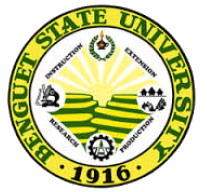
BSU Research Journal No. 75
BSU Research Journal No. 75
VISION
A premier State University in Asia.
MISSION
Development of people imbued with academic excellence, social conscience and productivity; and
actively generating and promoting environment-friendly, useful technologies to improve quality of life.
GOALS
1. Strengthen and sustain a working environment conducive for excellence;
2. Provide quality education that will produce globally competitive and well-rounded graduates;
3. Provide quality and client-responsive research and extension services;
4. Strengthen and enhance institutional capability in generating revenue towards self-reliance
5. Develop and strengthen quality management system towards economy; and
6. Strengthen and expand private public partnership.
PURPOSE
* To provide quality education that will produce globally-competitive graduates;
* To generate and disseminate appropriate knowledge and technologies that will promote sustainable
resource development;
* To strengthen and enhance institutional capability in generating revenue towards self-reliance;
* To establish competent and effective services geared towards efficiency and economy; and
* To develop harmonious and cooperative University Community relationships.
Benguet State University
RESEARCH JOURNAL
All communications should be addressed to:
THE EDITOR
BSU Research Journal
Benguet State University
La Trinidad 2601 Benguet, Philippines
Telefax: (+6374) 422-5547
Email address: bsupublications@gmail.com
Website: www.bsu.edu.ph
12 12